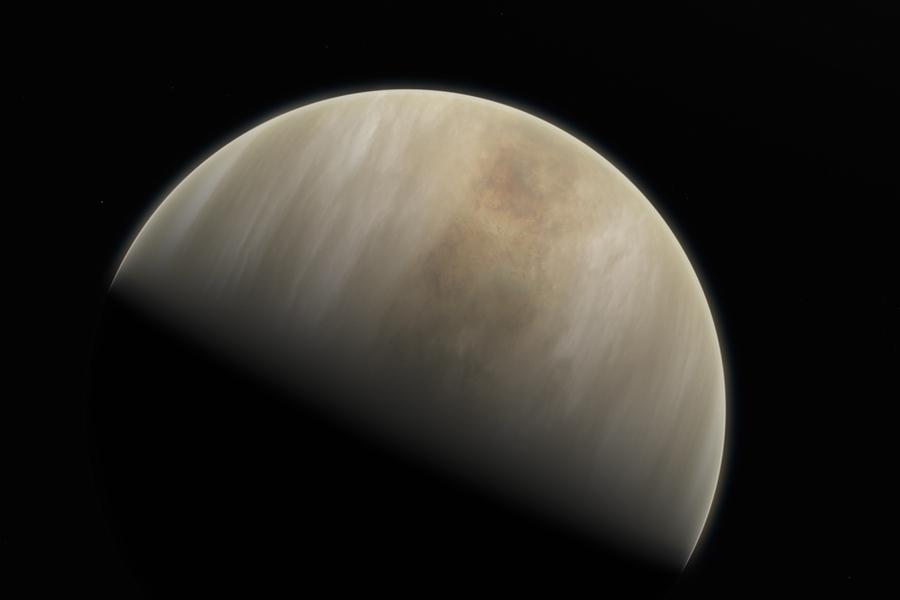In a surprising find, researchers have detected phosphine (PH3) in the atmosphere of Venus. This poisonous, colorless, flammable gas is nonetheless considered a strong sign of life, or "biosignature." Biosignatures are gases or combinations of gases that can only be plausibly produced by life and not through natural, abiotic, geophysical processes. Adding to the intrigue, phosphine was detected exactly within a narrow band of the Venusian atmosphere where temperatures are deemed conducive to life. The discovery could lead to a shift in mission and funding priorities at space agencies. See also: Astrobiology; Atmosphere; Gas; Venus

Researchers studying trace gases in Venus's atmosphere with the James Clerk Maxwell Telescope (JCMT) in Hawaii made the initial identification of phosphine at Venus back in June 2017. The unexpected detection of the gas's distinct spectroscopic signature in millimeter-wavelength light was confirmed by a separate observatory—the Atacama Large Millimeter/submillimeter Array (ALMA) in Chile. The observatories confirmed the gas's presence in a thin cloud deck some 48 to 60 kilometers (30 to 37 mi) above Venus's surface, where temperatures range from -1°C to 93°C (30°F to 200°F)—a range at which forms of Earthly life can survive. This habitable-temperature zone is in stark contrast to the rest of the inhospitable Venusian atmosphere and especially the planet's broiling surface, where temperatures reach 464°C (867°F). See also: Astronomical observatory; Spectroscopy; Temperature
Having indirectly observed phosphine, the researchers considered a multitude of hypothetical scenarios allowing for an abiotic, geological source for the gas; however, no source was found plausible. Here on Earth, phosphine is producible only through energy-intensive industrial processes or by certain kinds of microbes. These microbes emit the foul-smelling, toxic gas as a byproduct of anaerobic respiration involving the decomposition of organic matter. Accordingly, phosphine is often in the air around swamps and marshlands, while also appearing in the digestive tracts of some animals. In the atmospheres of gas-giant worlds, such as Jupiter, extreme pressures and meteorological conditions can yield phosphine. Although Venus's atmosphere is about 100 times denser than Earth's, conditions there still do not conceivably allow for phosphine's production or persistence. See also: Earth; Jupiter; Microbiology; Respiration
To solve the mystery of the origin of Venusian phosphine, researchers will continue making remote observations from Earth while also conducting intensive theoretical and simulation work. At present, only a single spacecraft—Japan's Akatsuki orbiter—is conducting observations at Venus. It is possible that direct measurements within the atmospheric band in question by a future robotic mission will ultimately be necessary to conclude whether the phosphine signal is abiotic or is actually from alien life.





